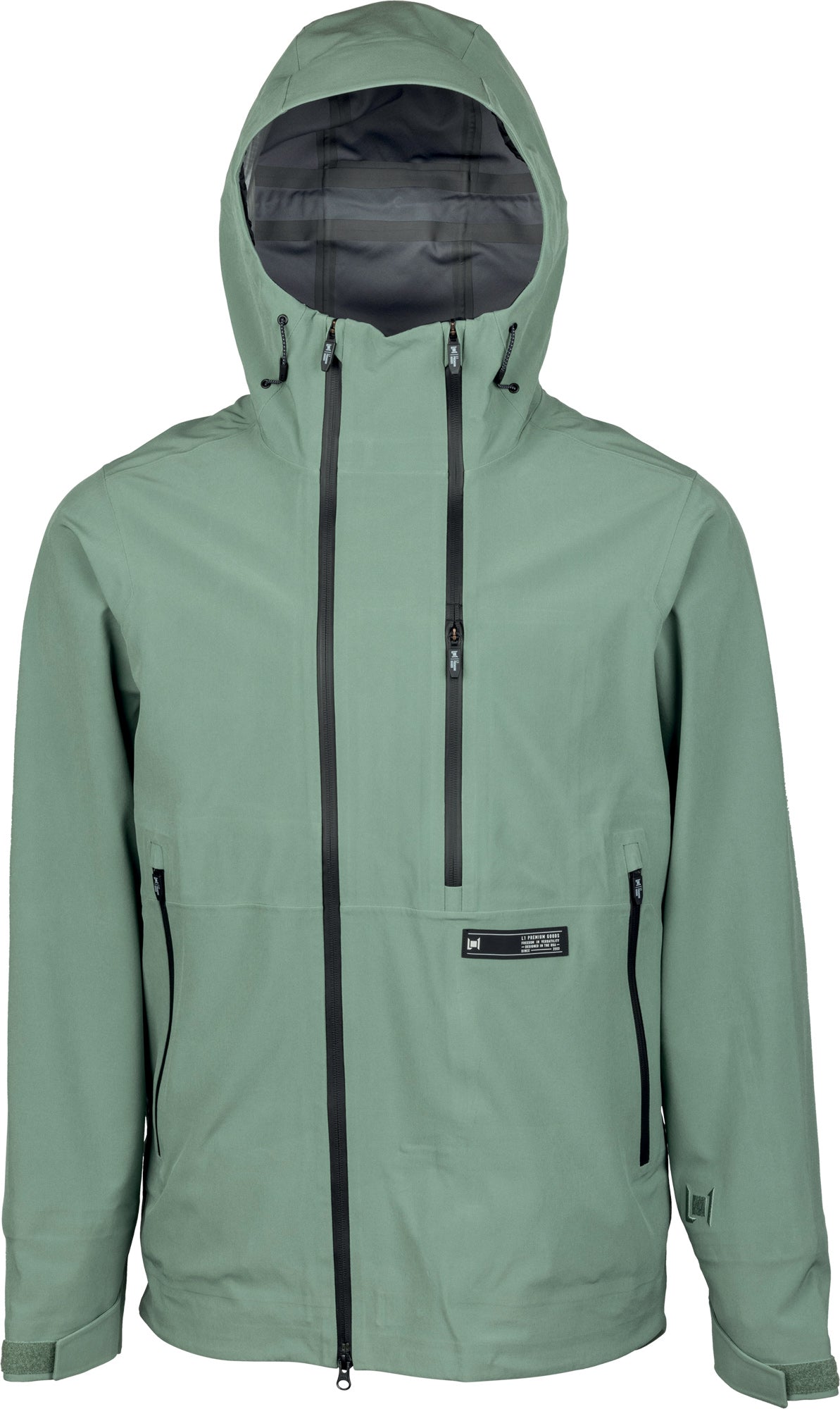
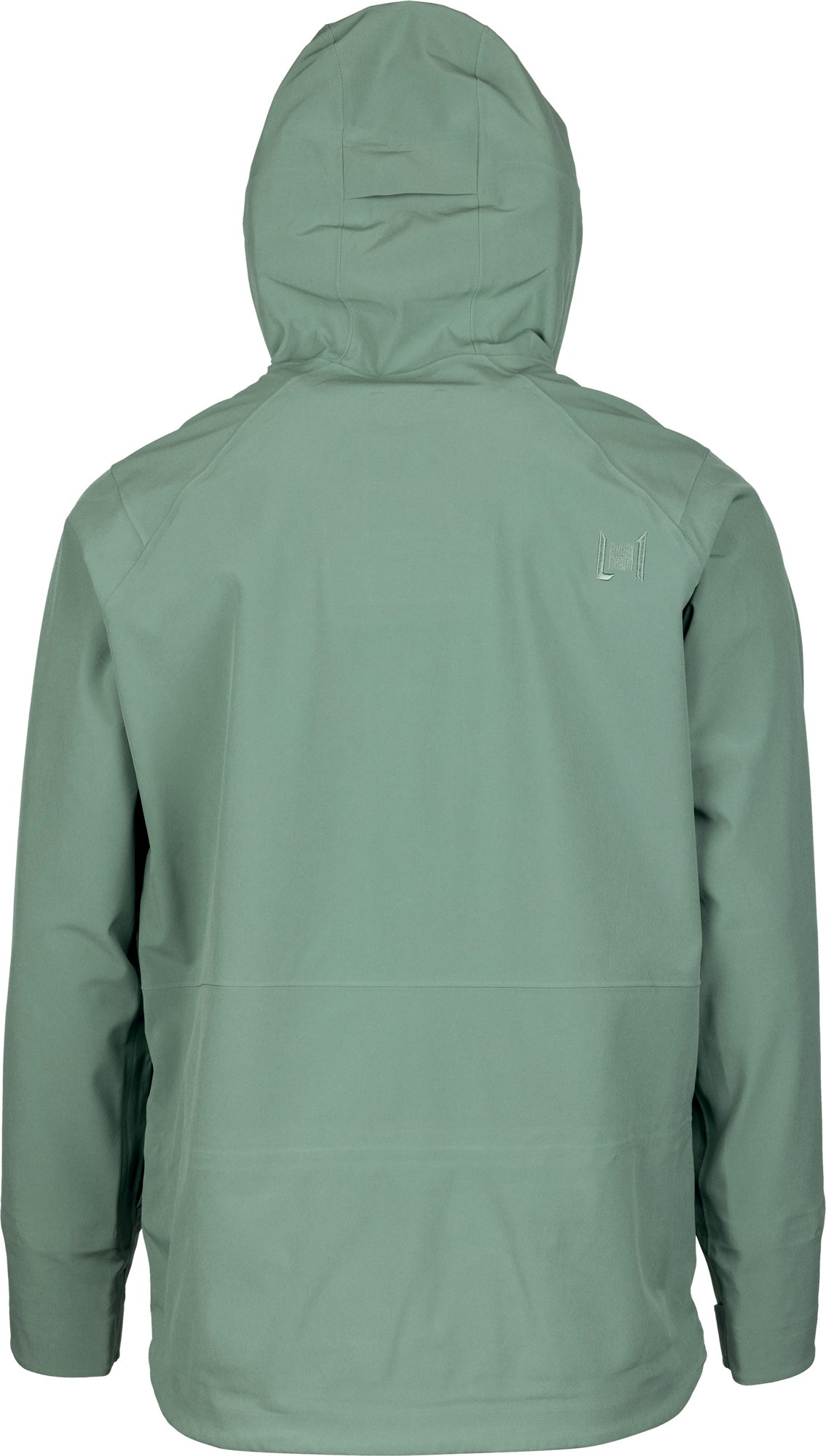

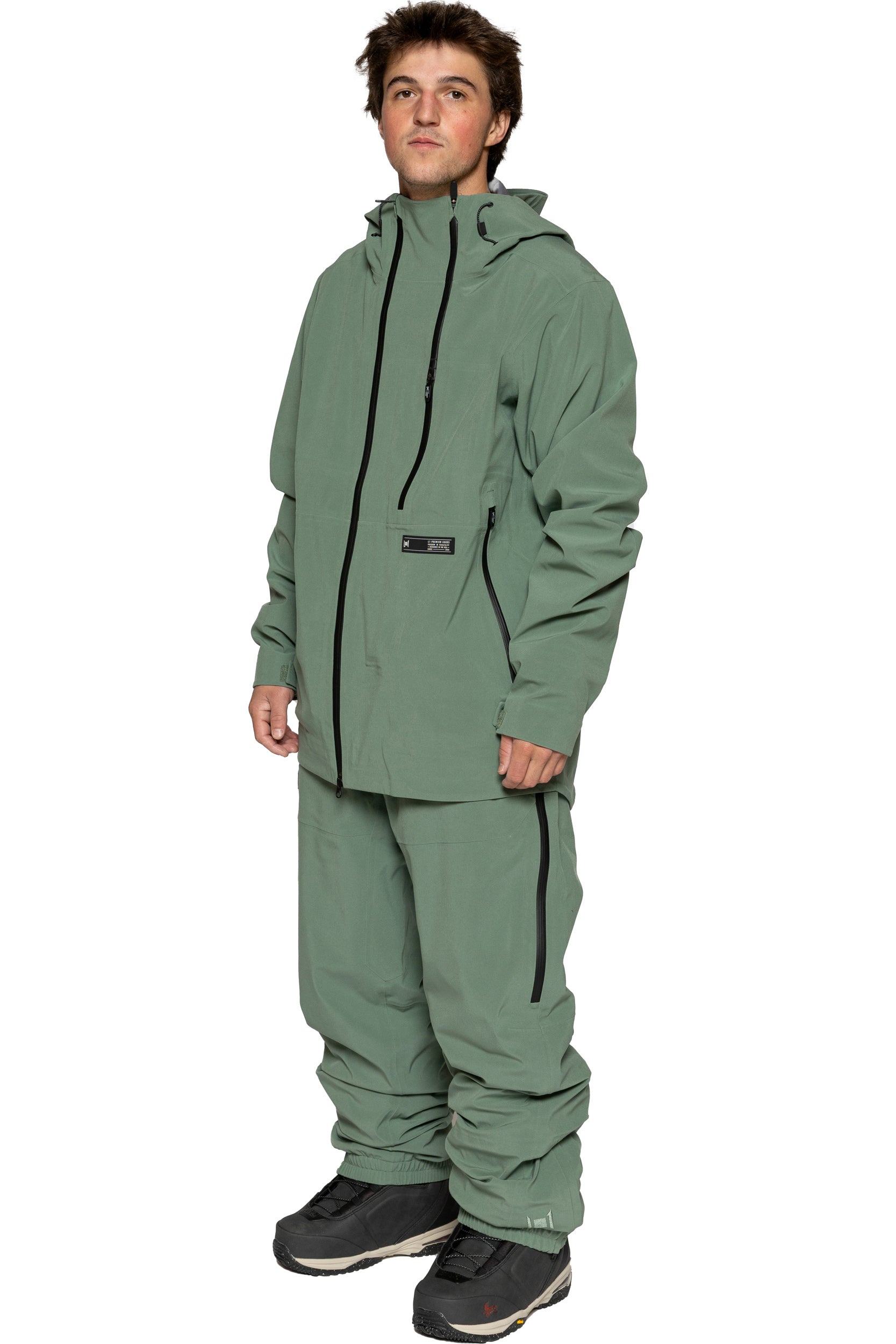

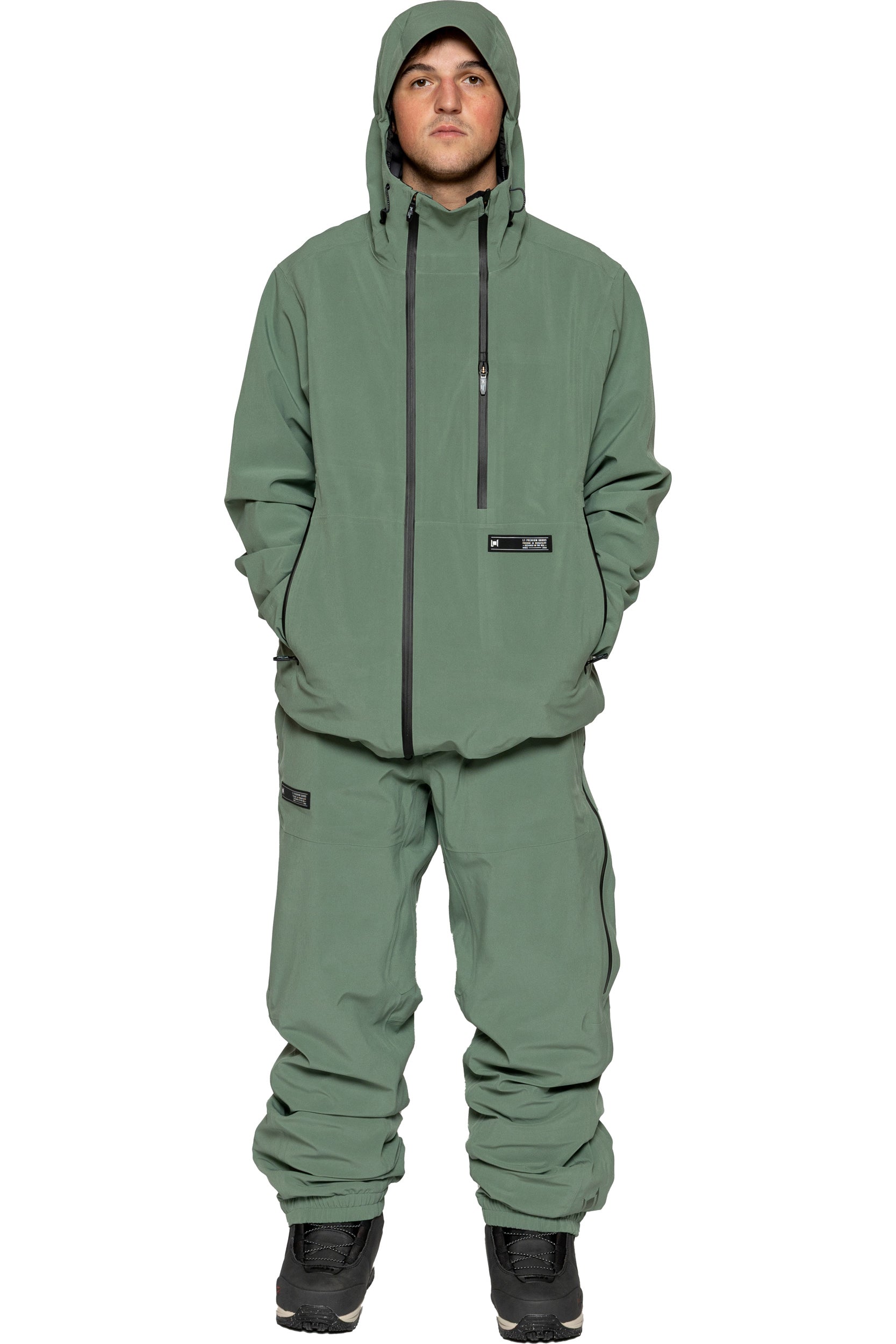
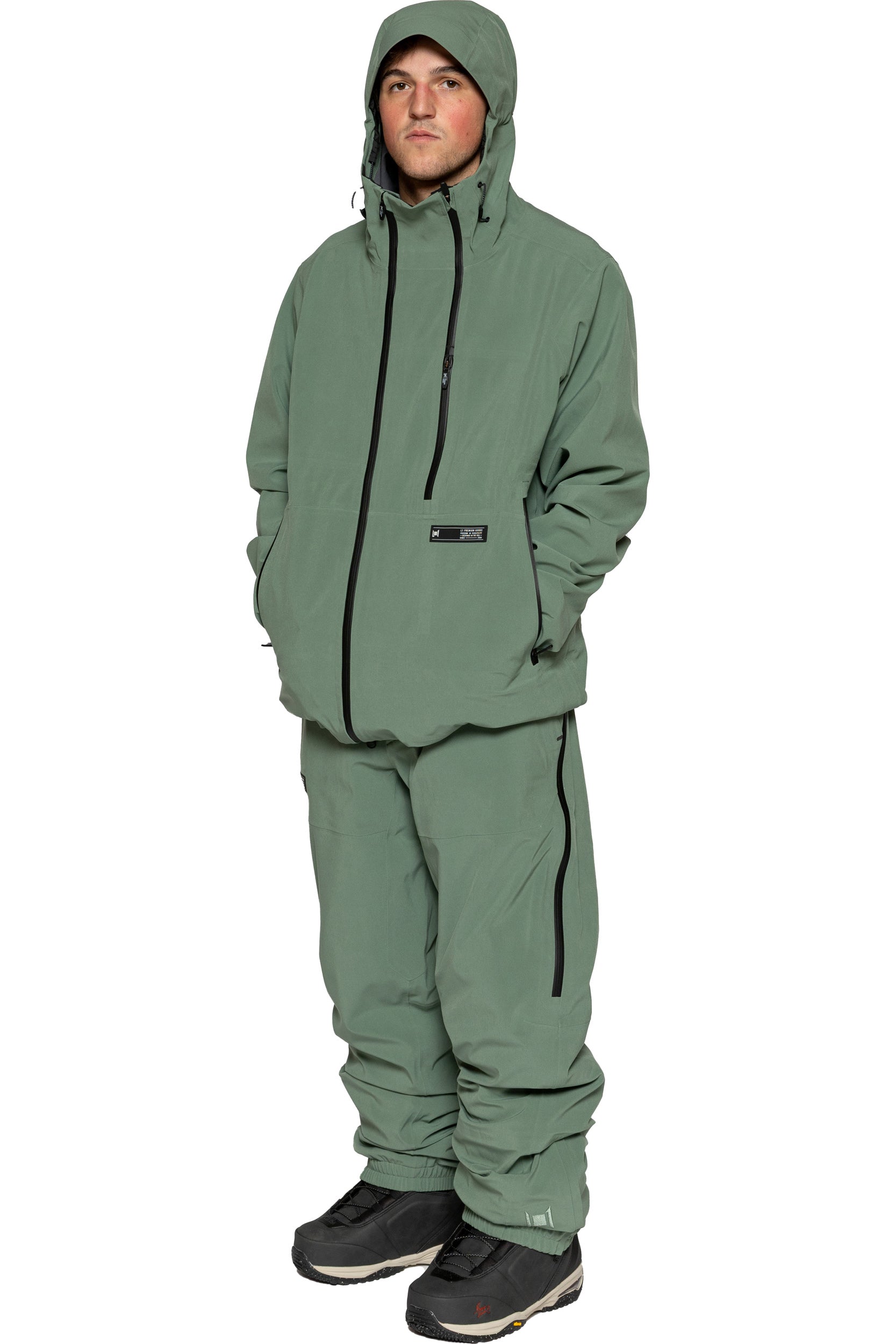
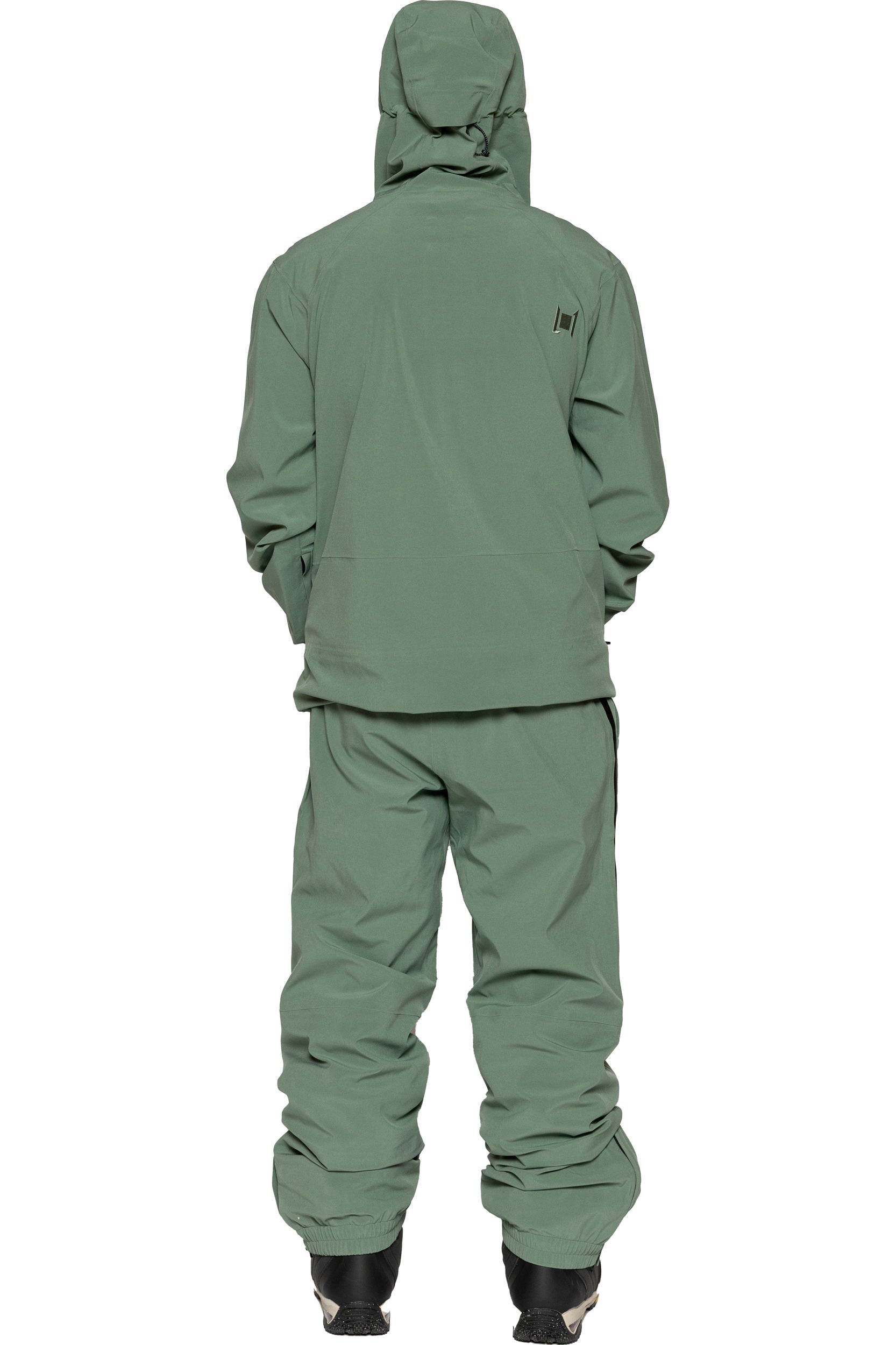
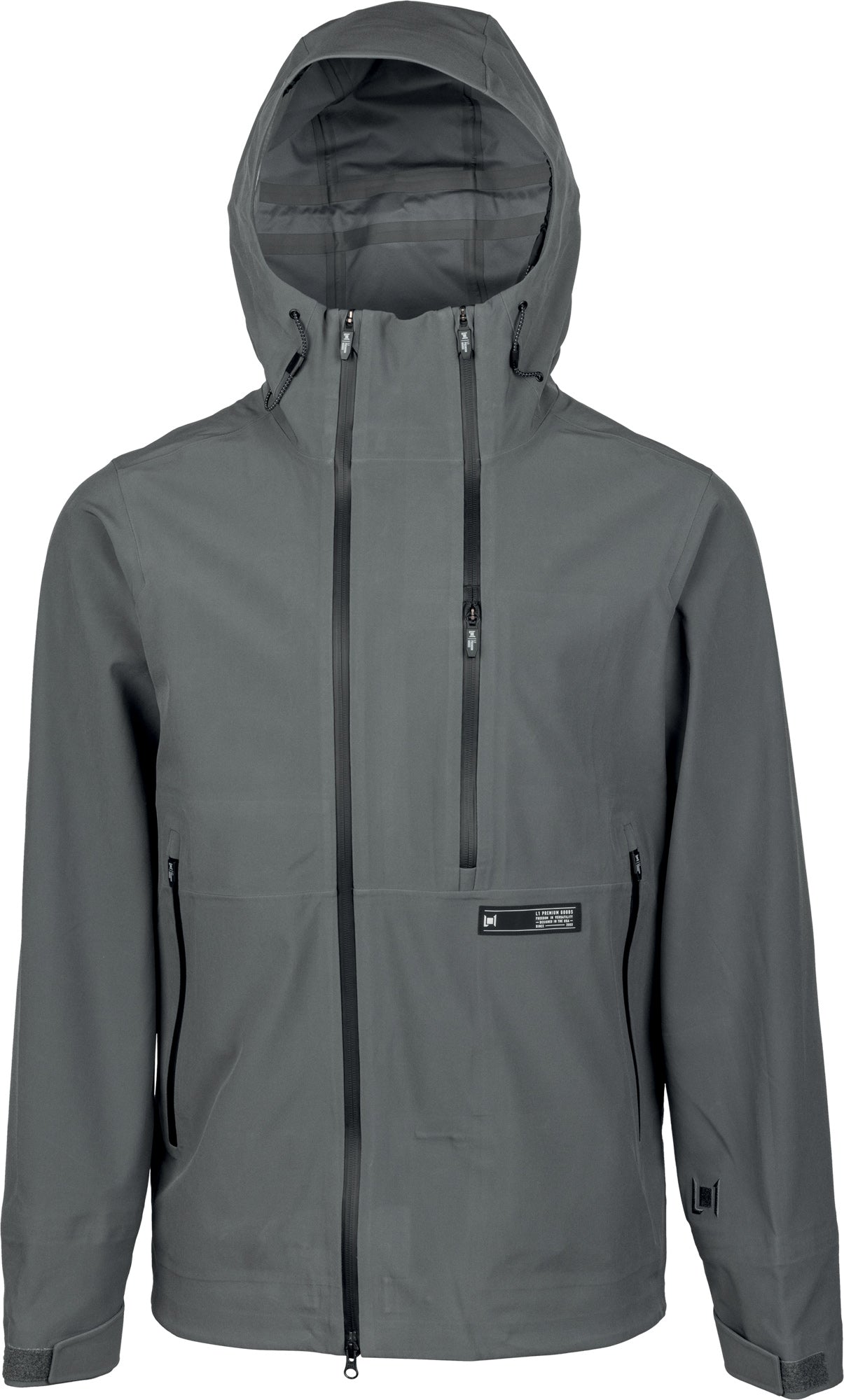
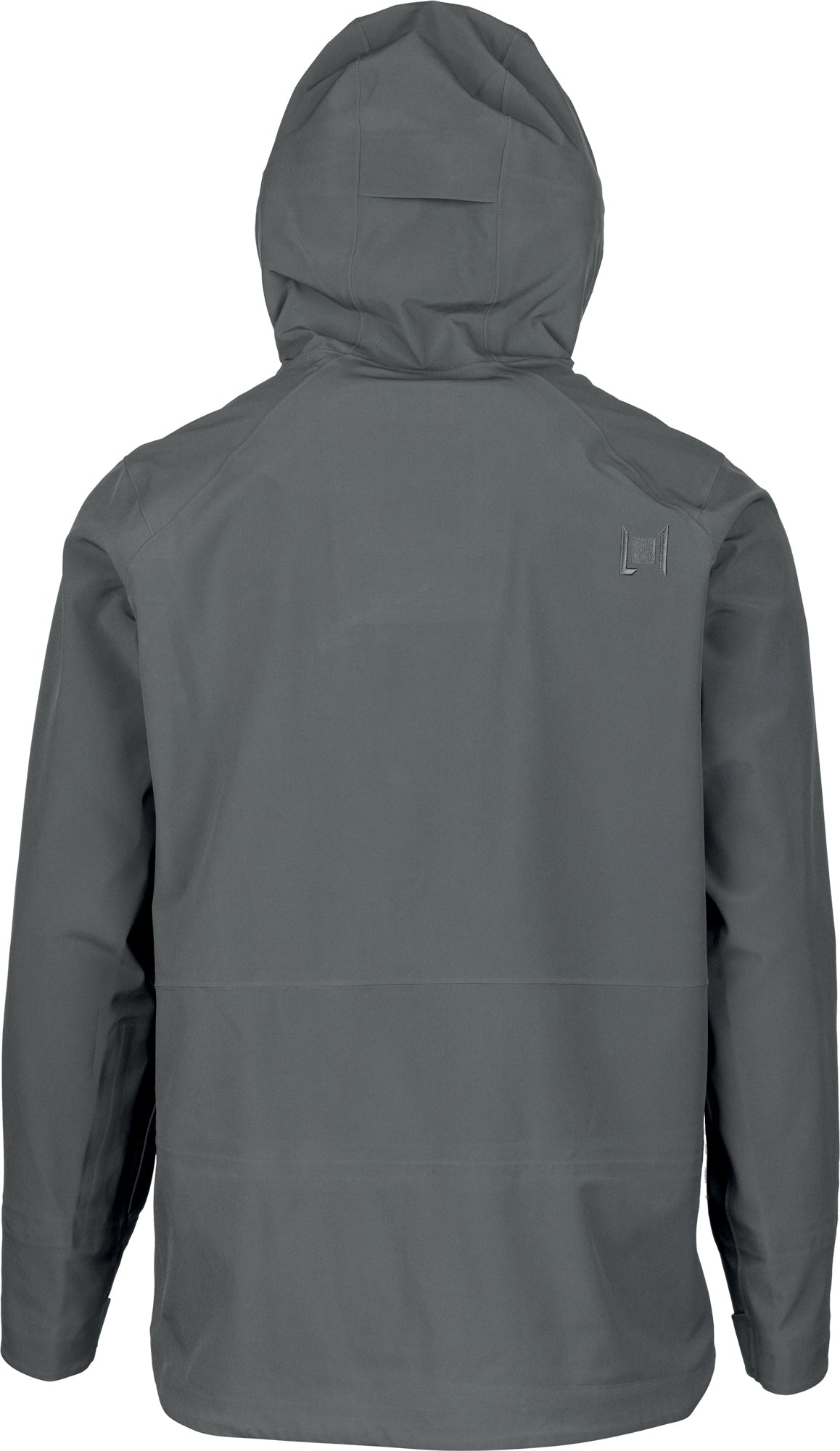
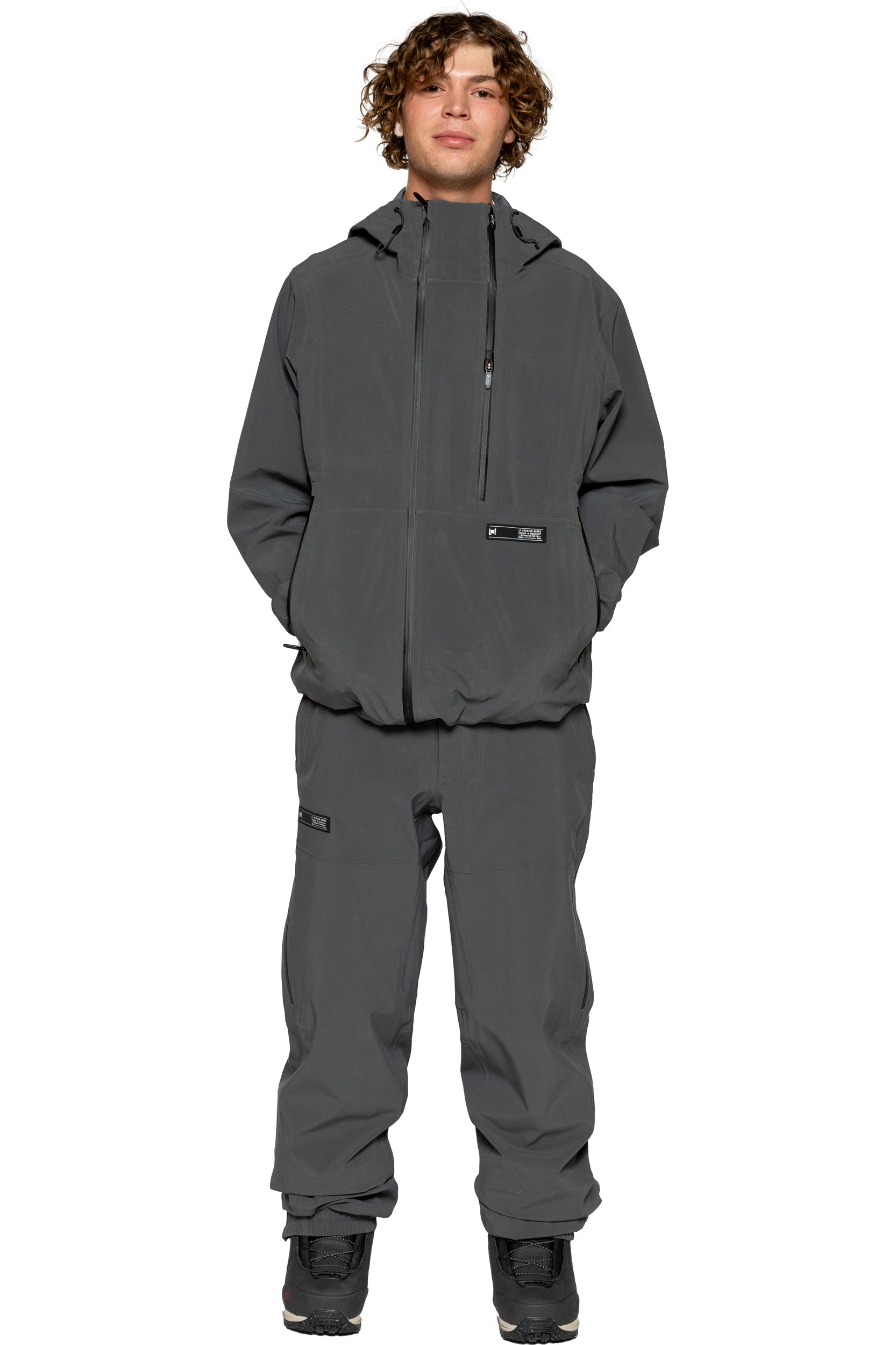

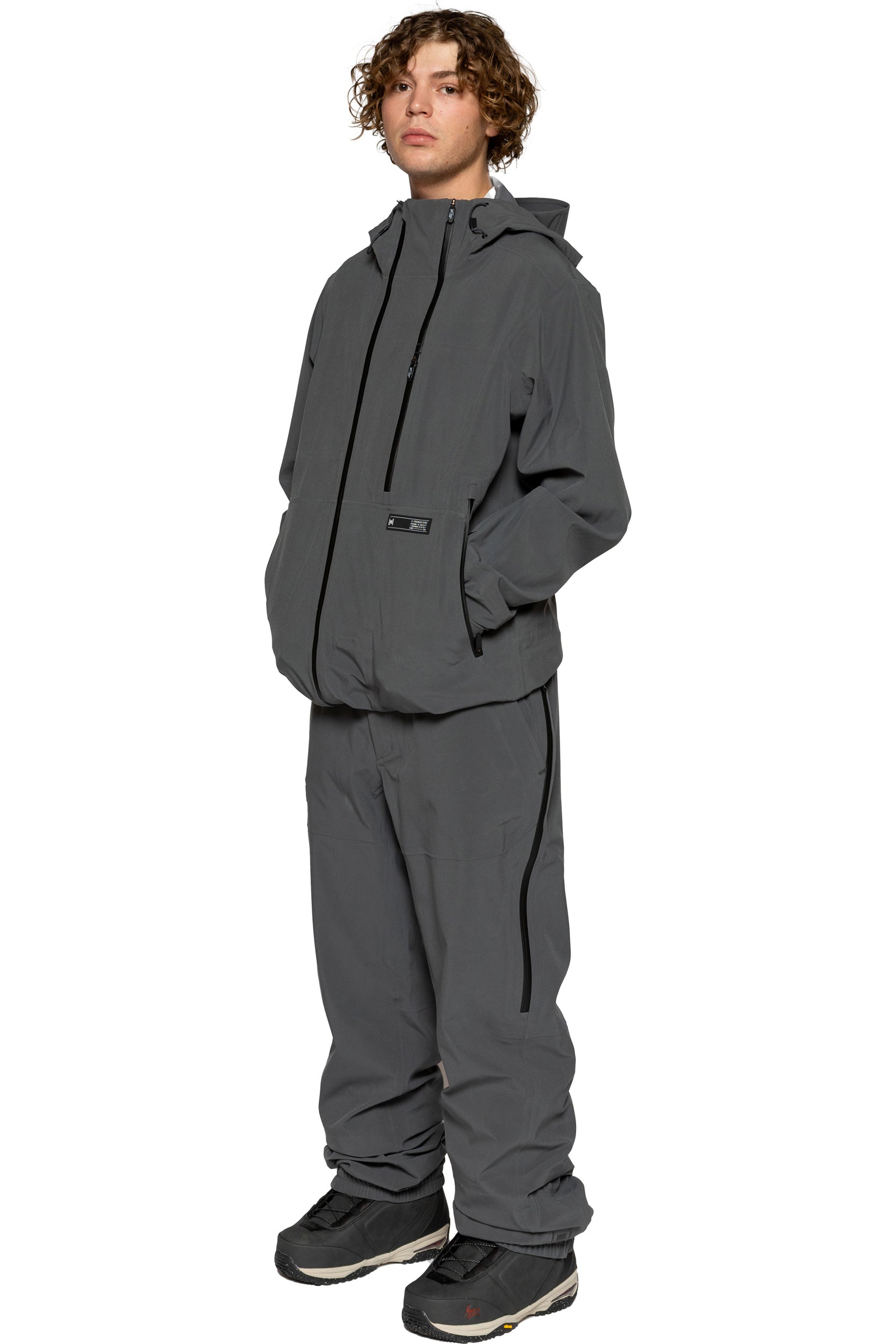
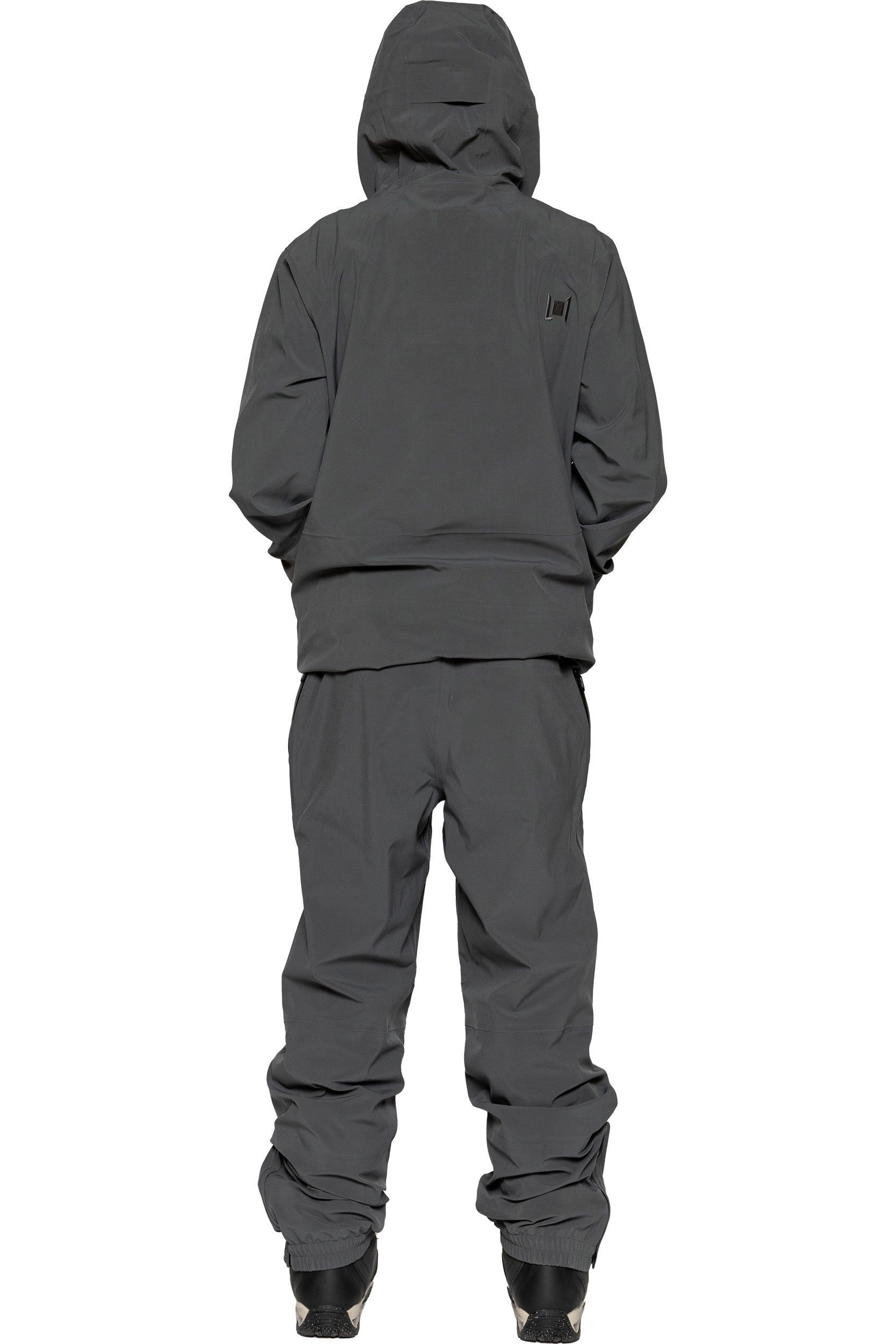
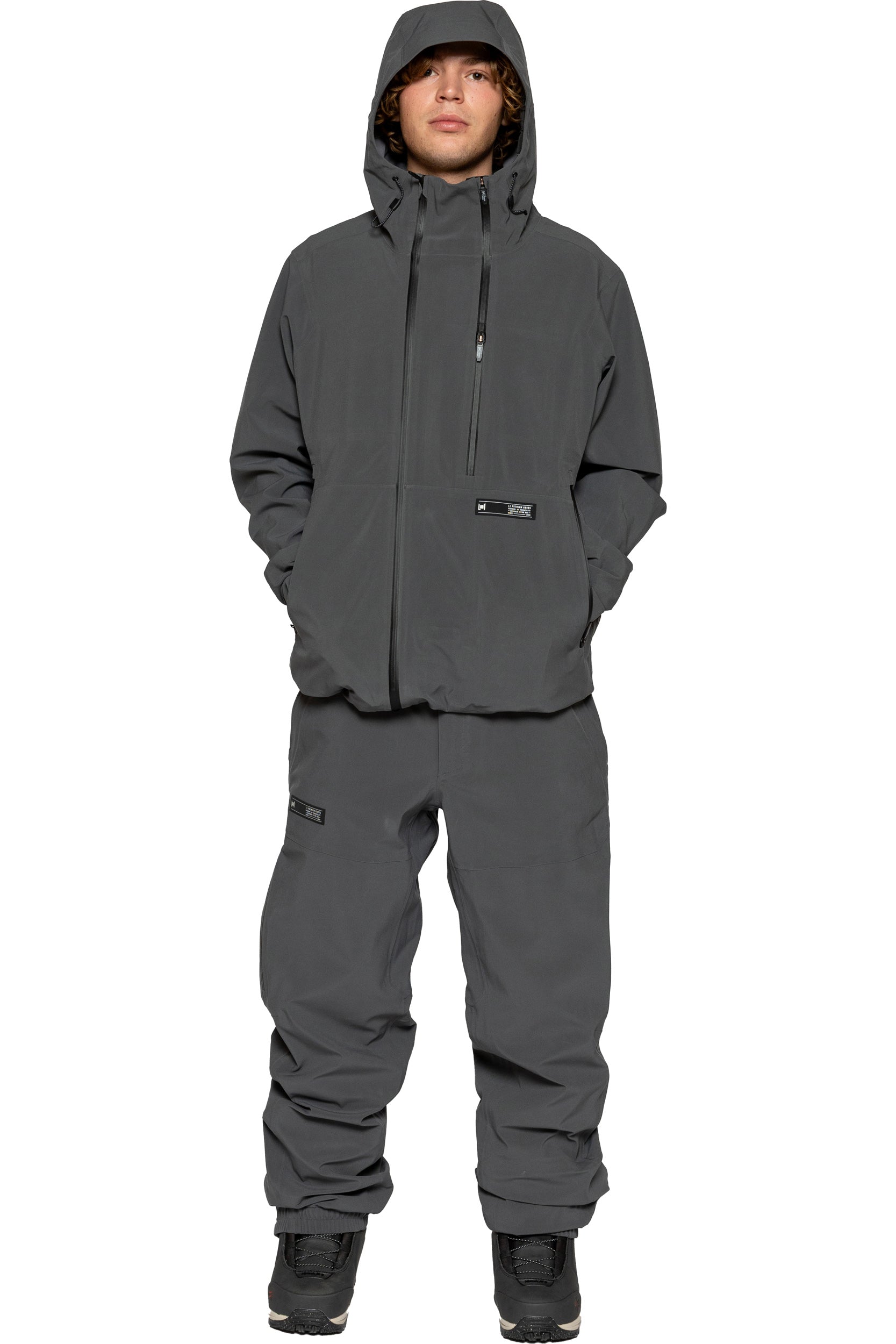
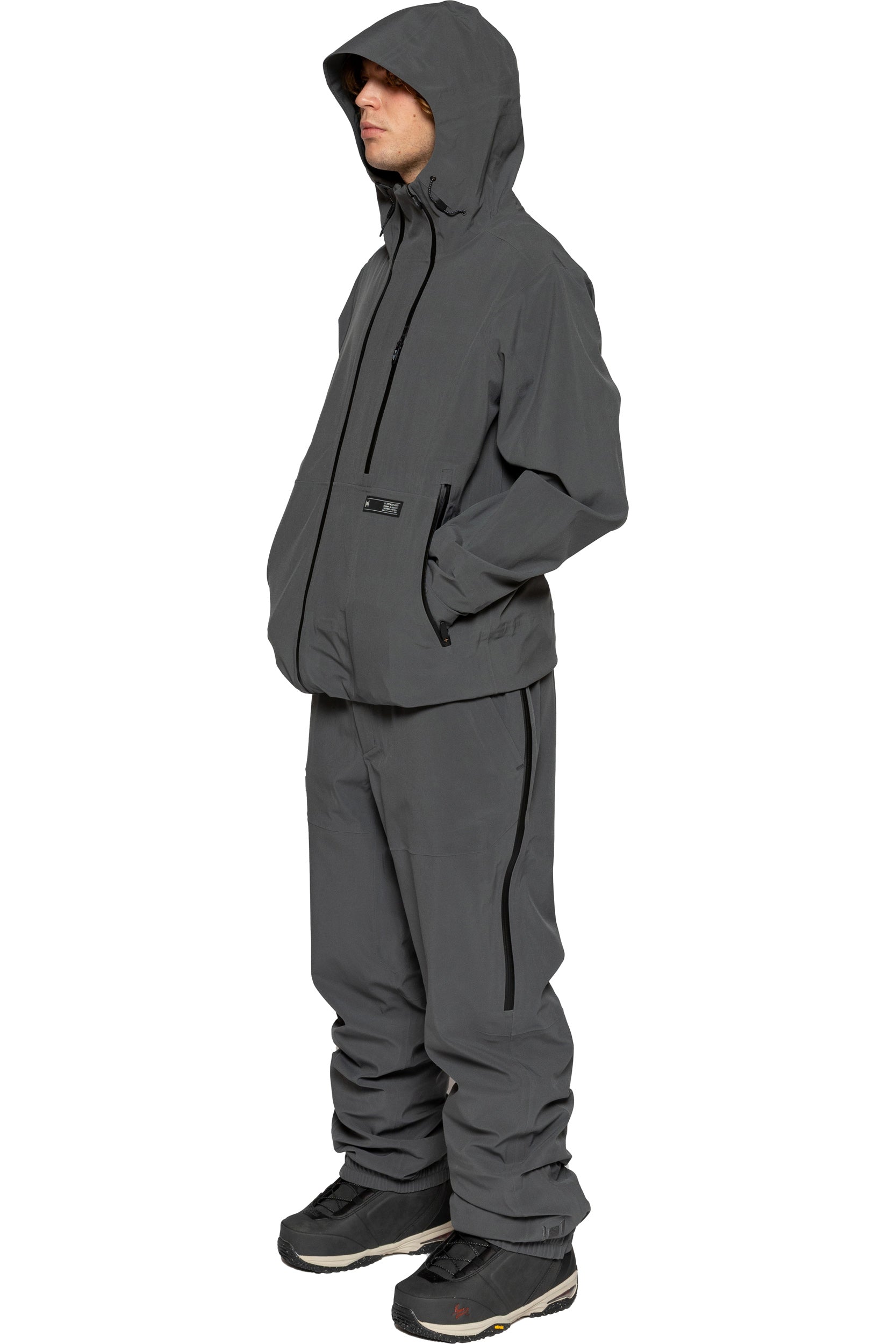
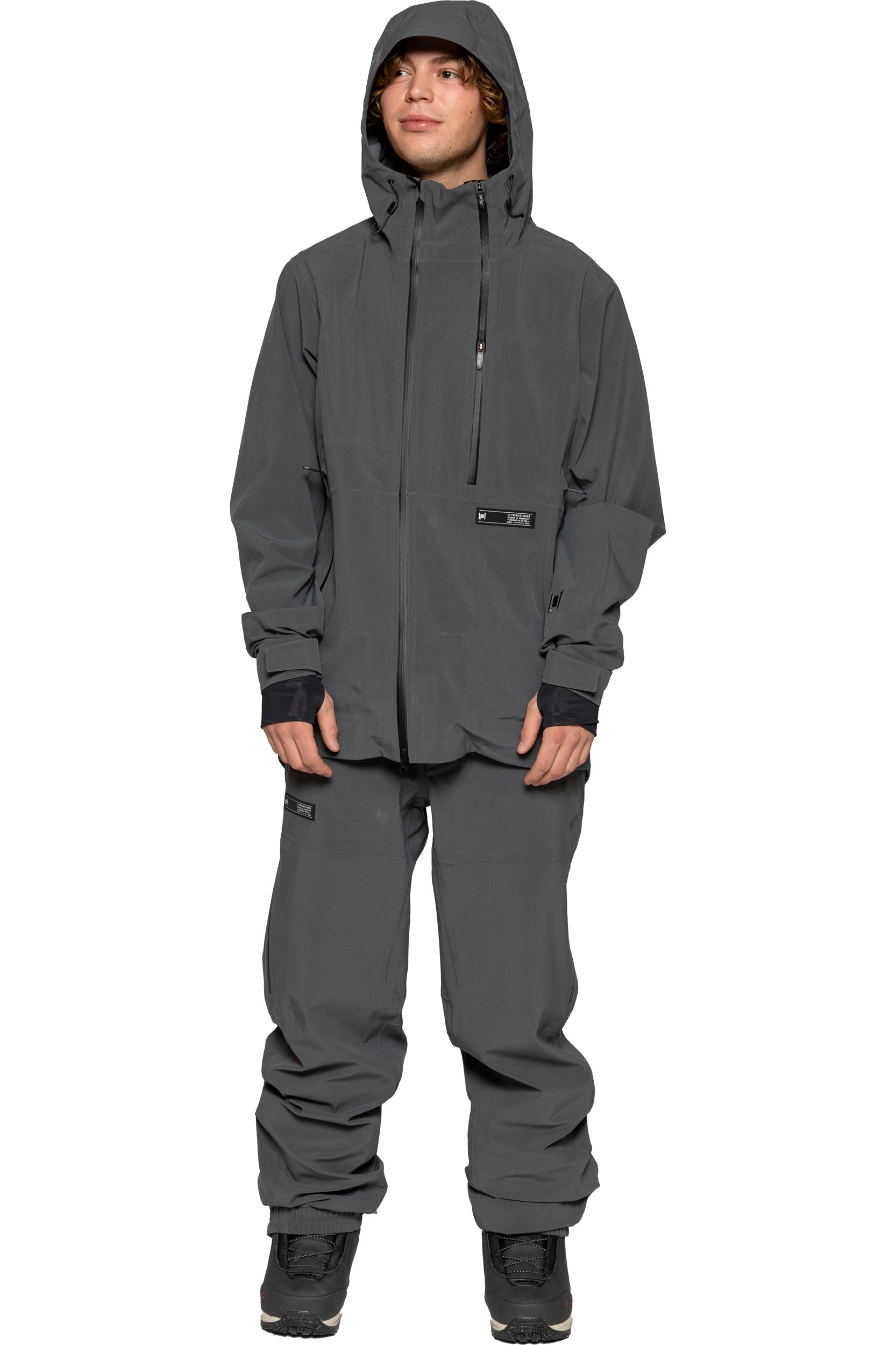

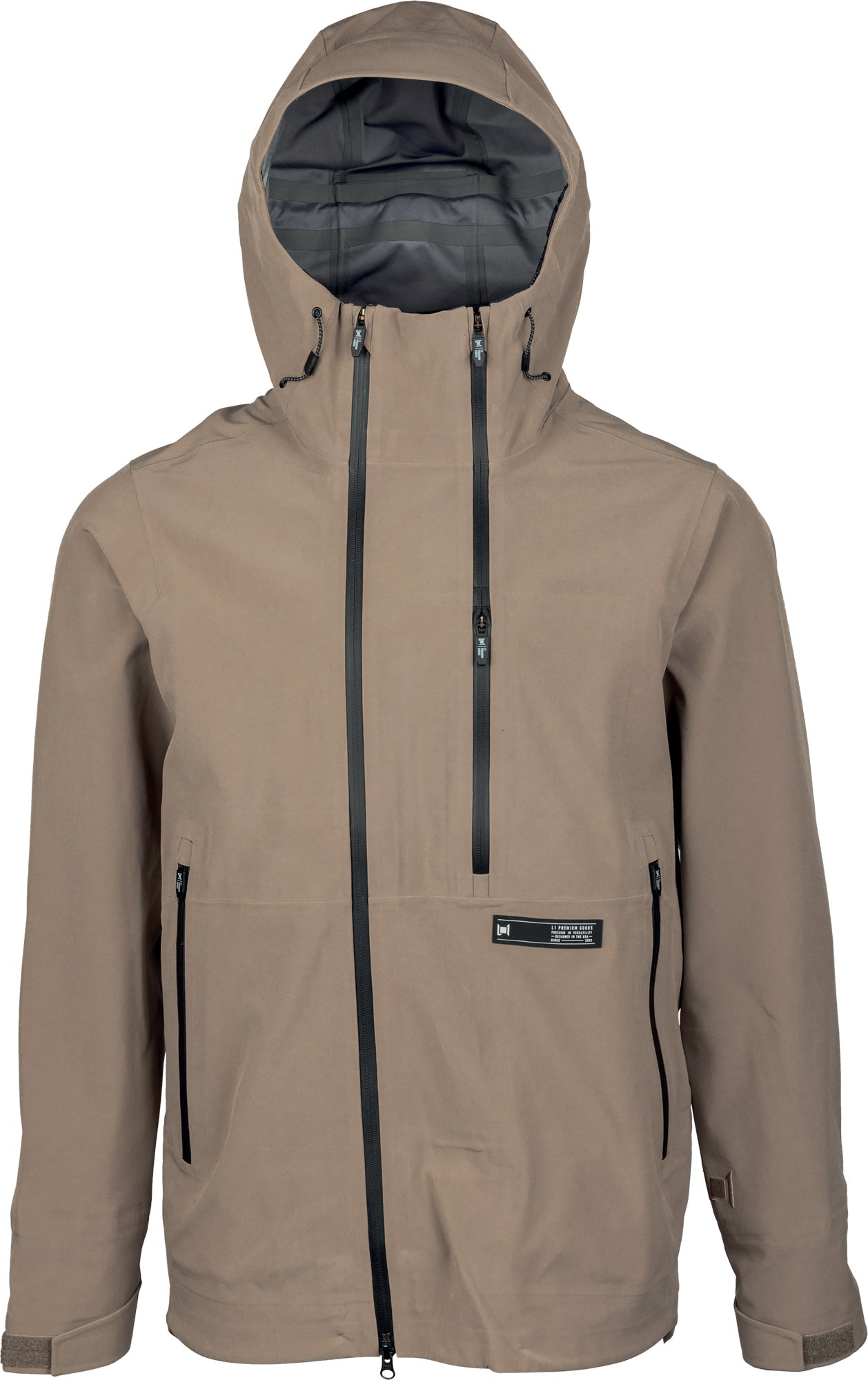
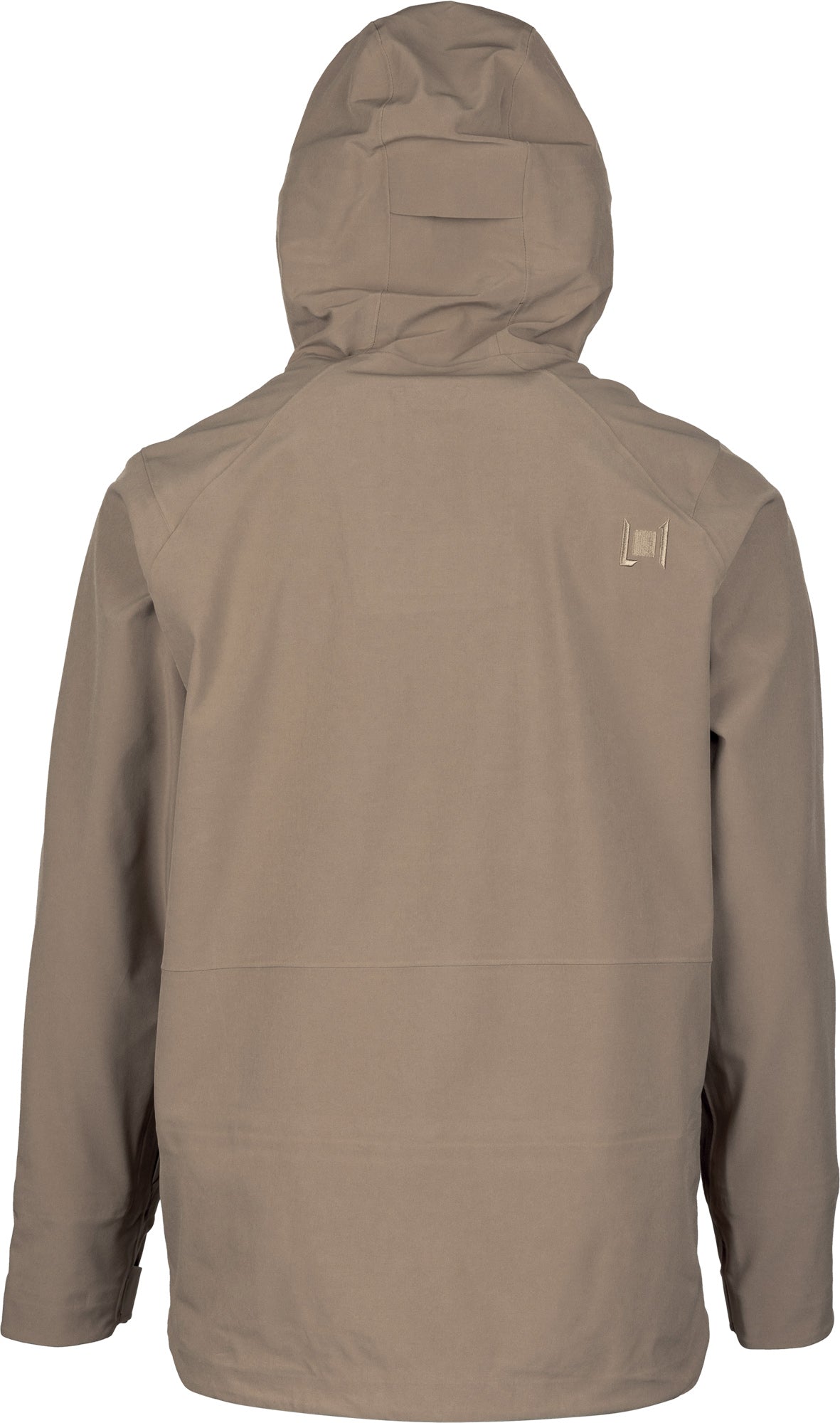
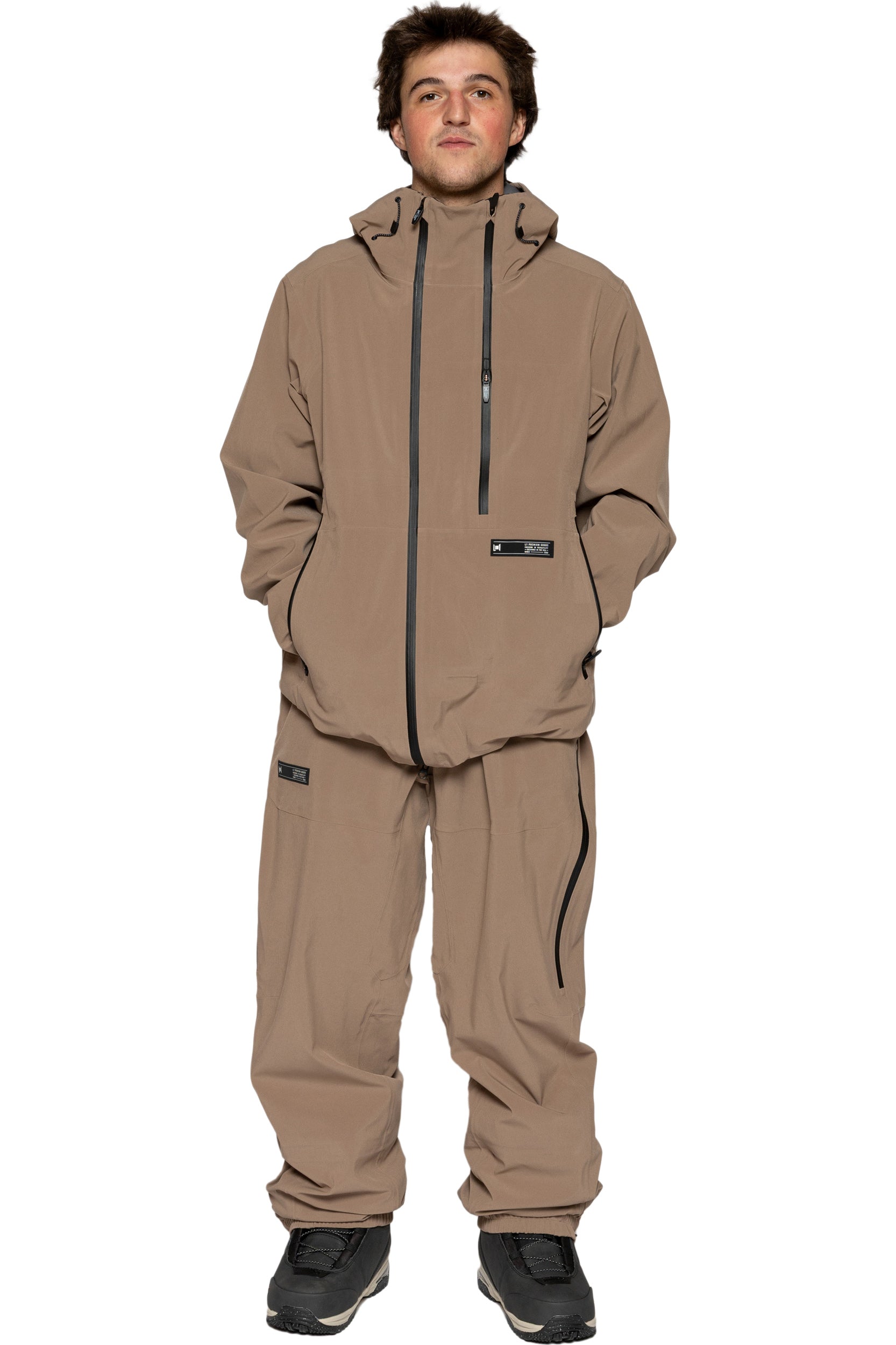

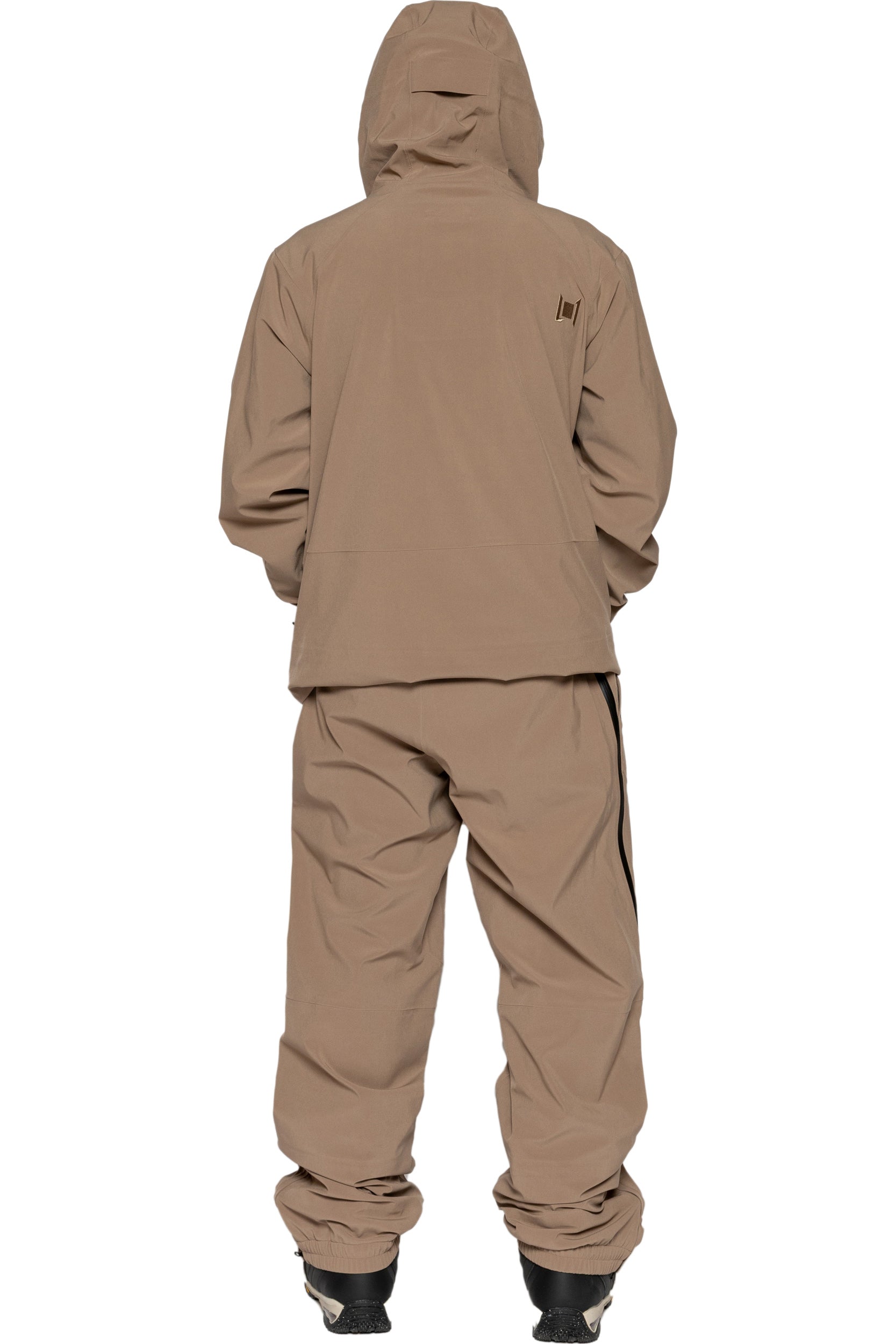

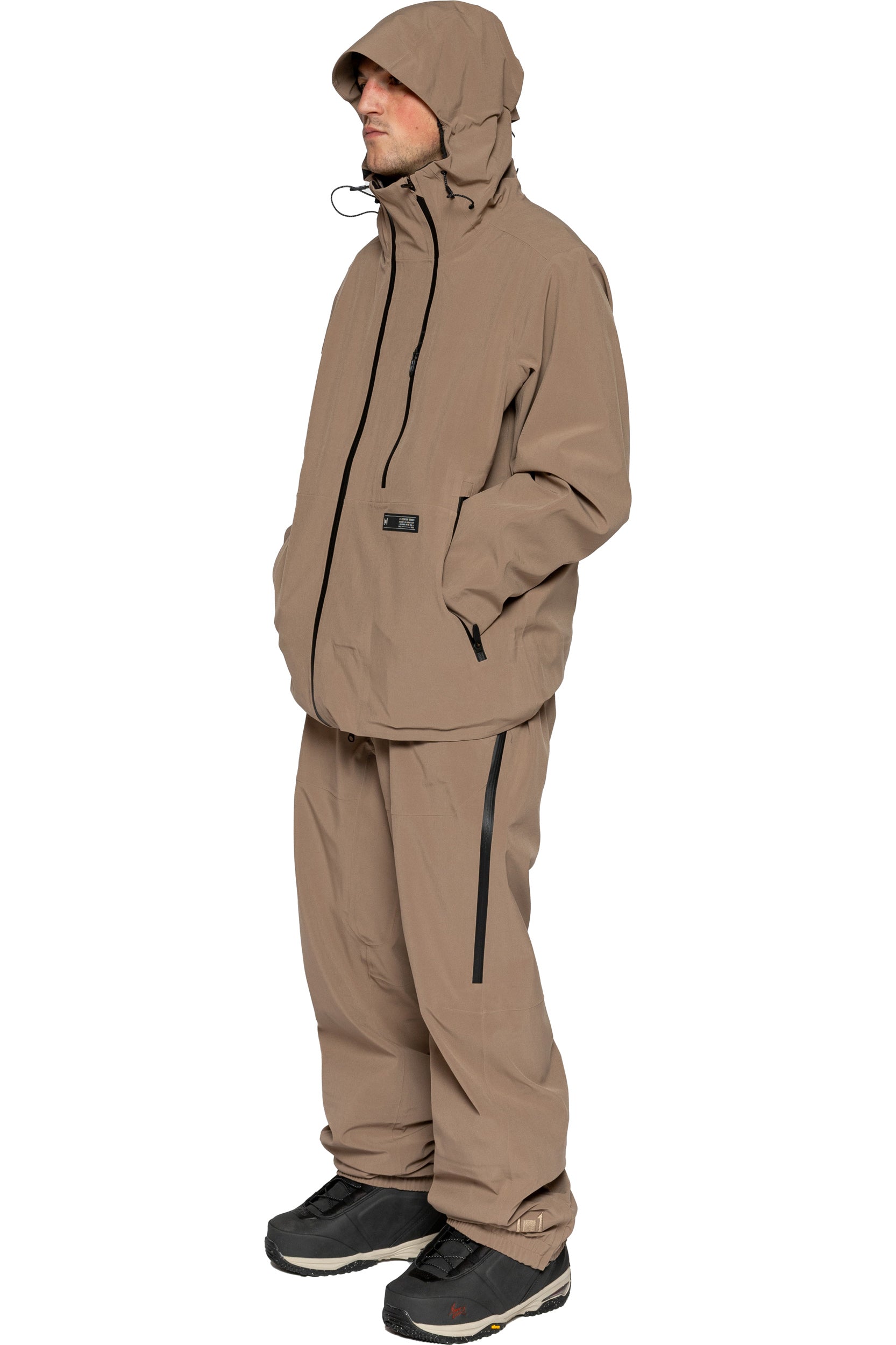

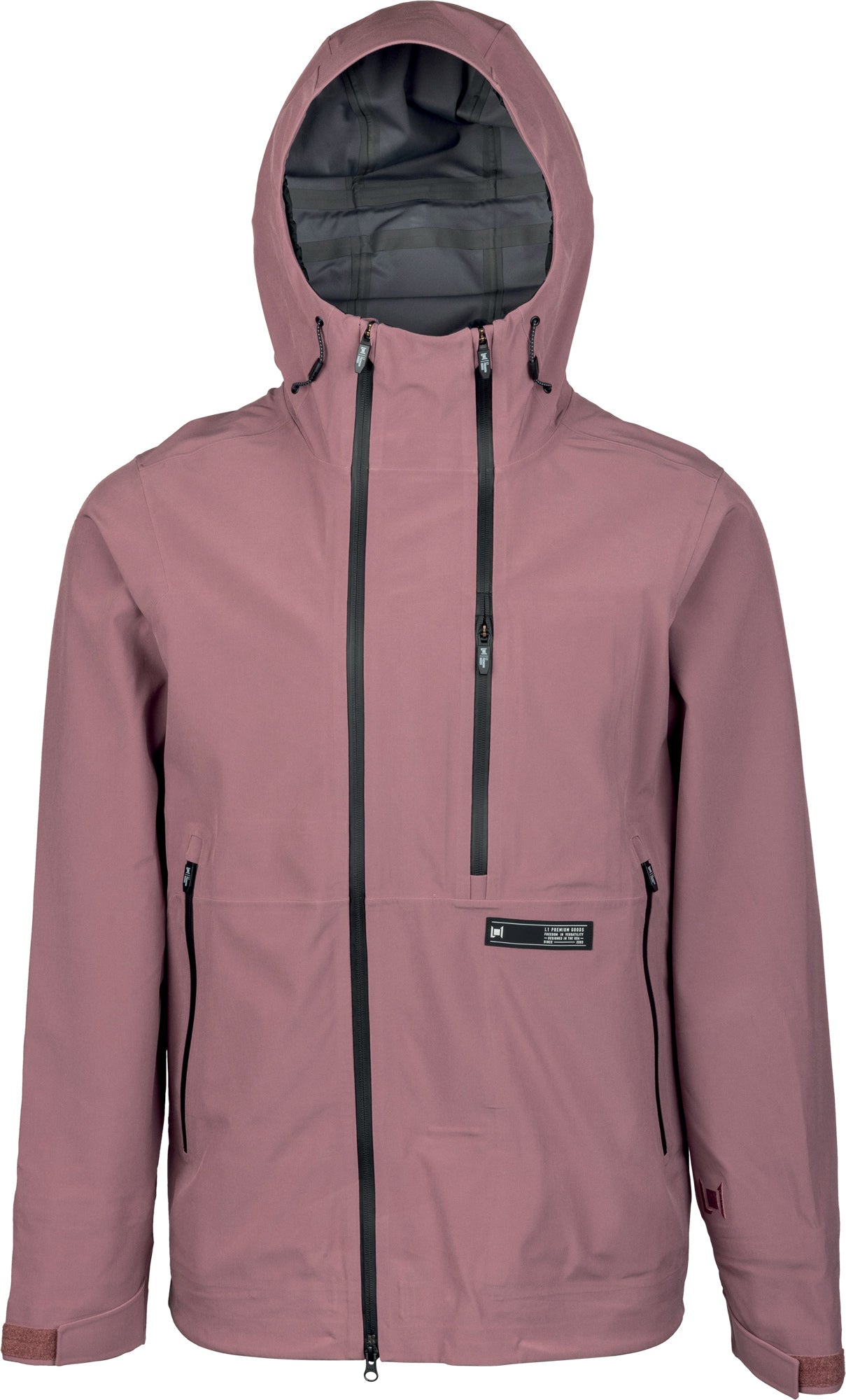
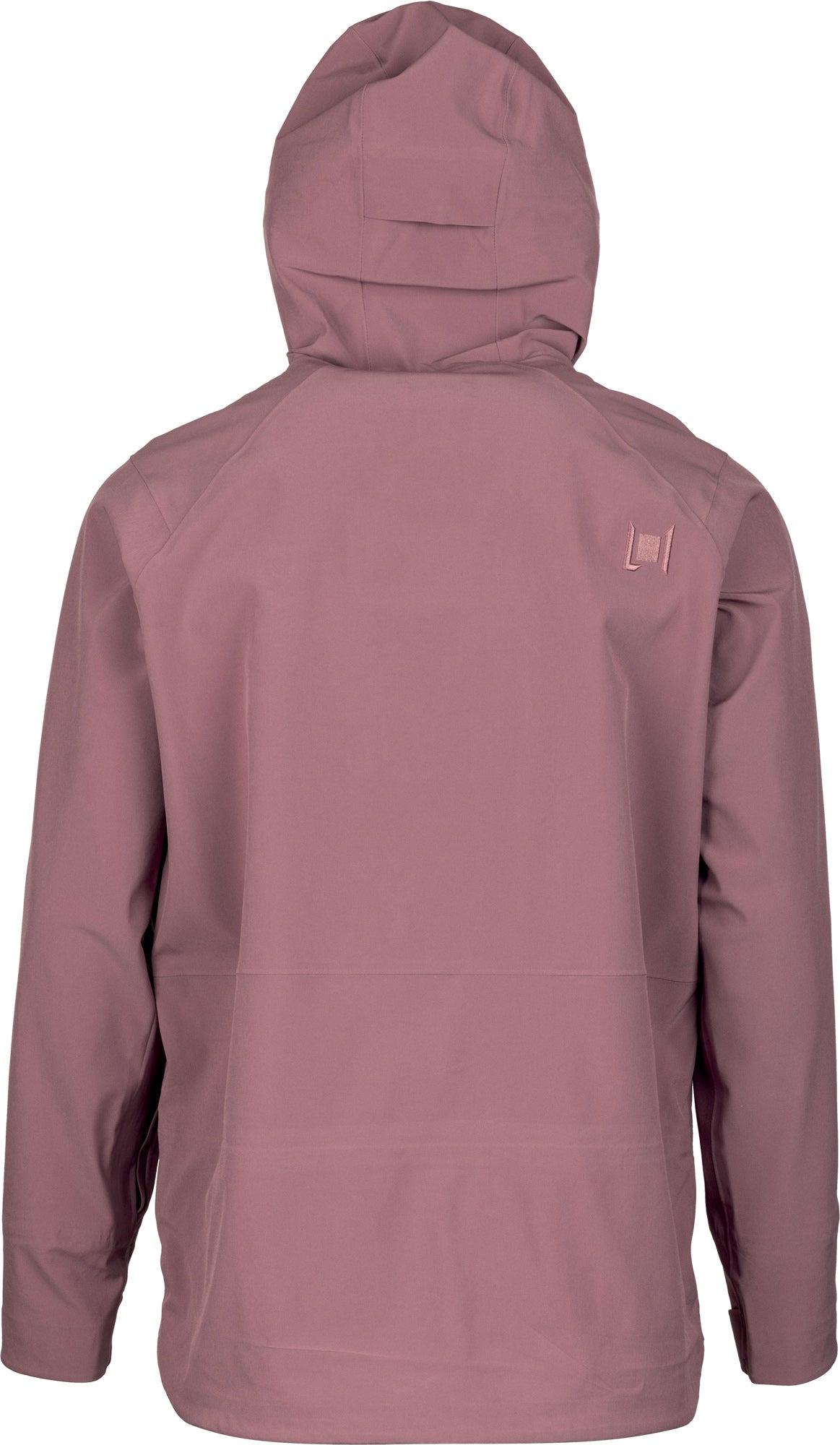
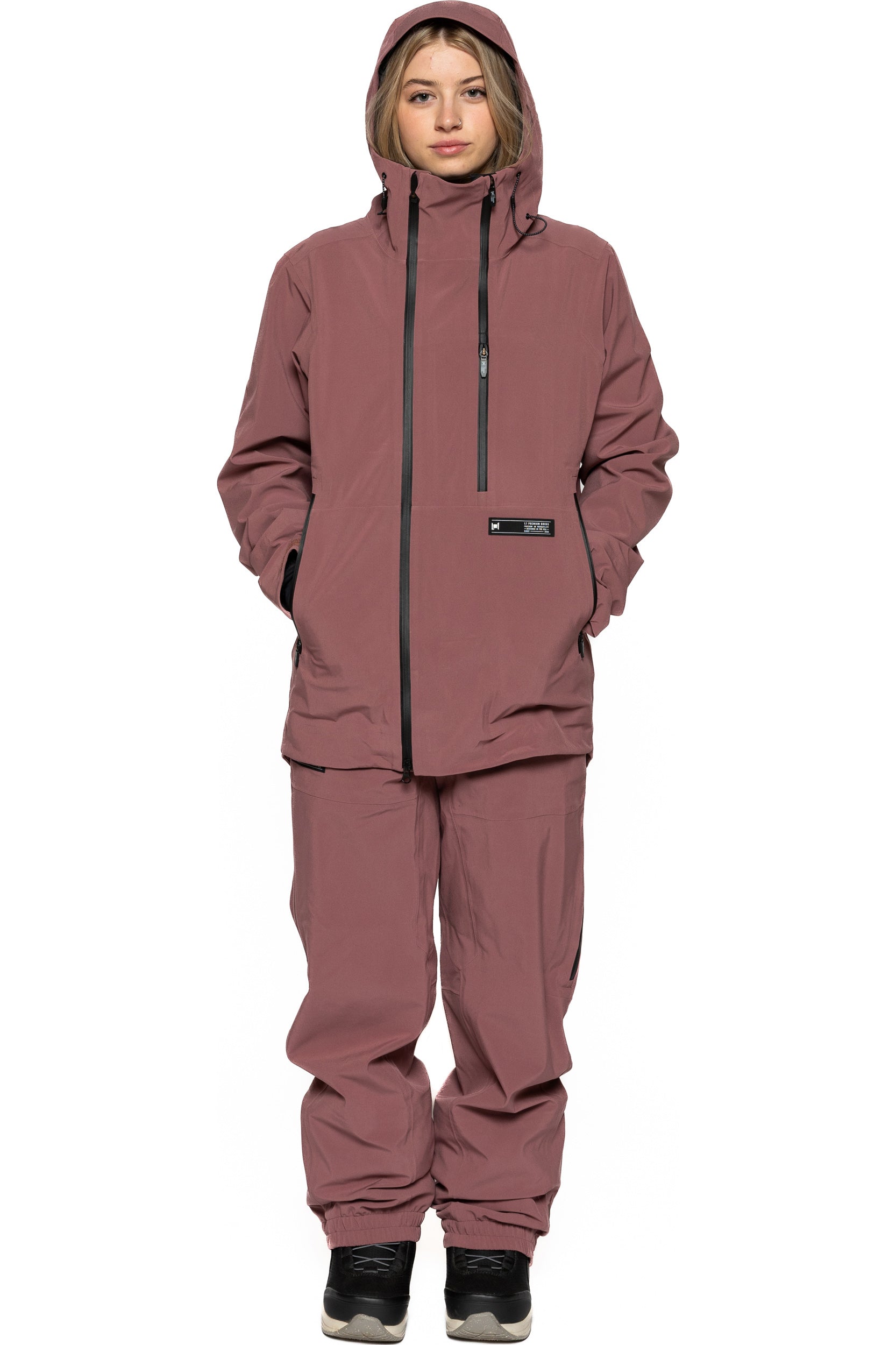

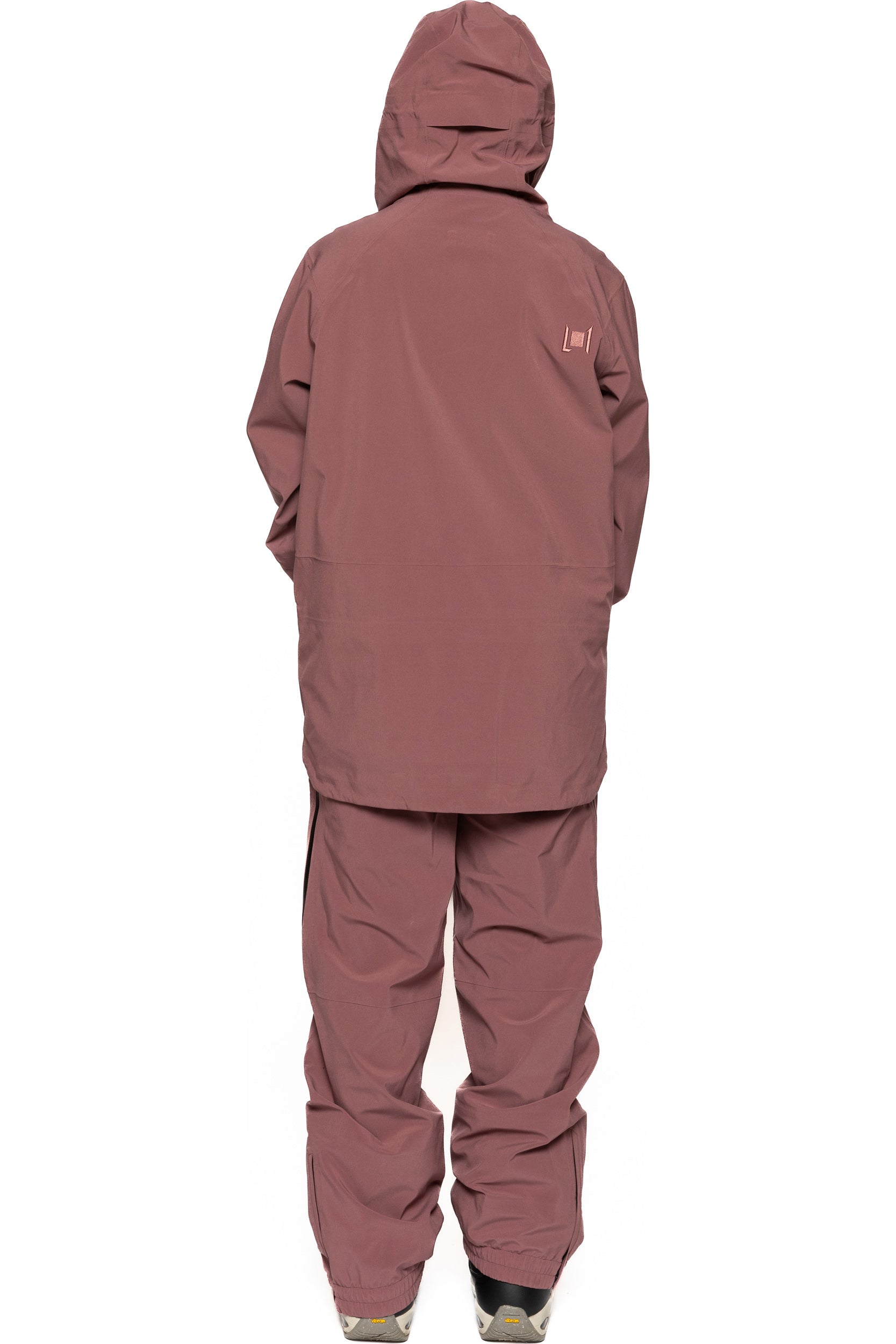
L1 Axial Jacket
The Original All-Mountain Baggy 4-way Stretch Fit
Product Information
L1's premium 20K/20K minimalistic jacket sets the standard of mountain functionality within our community. The Axial's genderless active mountain fit allows everyone looking for a loose-fitting, lightweight, technical jacket to explore beyond the marked trail. The recycled 4-way stretch 3-layer fabric provides unparalleled protection from extreme conditions and comfort for regular days.
Construction Details
Technical features
- NOVA-X
- Fully taped seams
- Shell
- 20K Waterproofness
- 20K Breathability
- Regular fit
Sustainability Efforts
- PFC-free DWR
- Recycled materials
- Eco Yarn Lining

L1 Axial Jacket
Sale price0,00 €
Specifications
NOVA-X
Our technical, waterproof, breathable, windproof, 20k/20k 4-way stretch fabric solution exclusively available on our Axial Collection.
Fully taped seams
All seams and areas with stitch lines are heat sealed with water-repellent tape.
Shell
Non-insulated garment, single layer, wind-resistant.
20K Waterproofness
20,000mm Waterproofing
20K Breathability
20,000g Breathability
Regular fit
Our traditional fit with room to layer, without being overly loose. Standard fit through the seat, thigh and a straighter leg opening.
PFC-free DWR
As part of our commitment to improving our environmental footprint we have entirely switched from C6 DWR containing hazardous PFC’s (per- and poly-fluorinated chemicals) to PFC-free DWR on all our fabrics and styles that require a DWR coating. The importance of a cleaner textile process is fundamental in our journey to reducing our environmental footprint.
Recycled materials
A work in progress, we’ve set a goal to work towards having a line completely made of only fully recycled fabrics in the near future. As we start this journey, our main goal is to do our part in reducing the industry’s greater impact one step at a time.
Eco Yarn Lining
Our liners use an eco-friendly fabric—a waterless-dyed fabric produced without immersion in water. This process reduces CO₂ emissions and uses less energy to produce. It also helps improve the environmental balance of textiles throughout the product life cycle.



